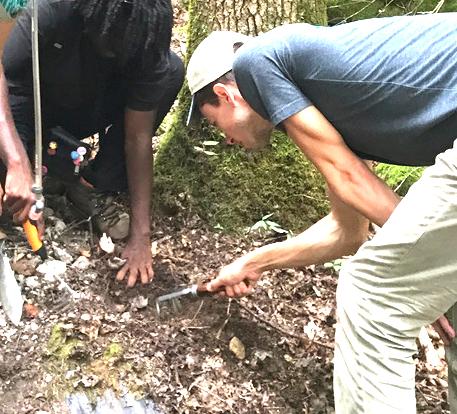Black truffles grown in eastern U.S. may be less valuable lookalike species
Researchers at Michigan State University and the University of Florida, have discovered that truffle producers in the eastern U.S. may be inadvertently cultivating a less flavorful species of truffle.
Truffle producers in the eastern U.S. intending to grow European black truffles (Tuber melanosporum) are also accidentally cultivating Tuber brumale, a related species that looks nearly identical but does not offer the same level of rich, pungent earthiness as its cousin, and sells at a lower price according to a new paper published in Mycorrhiza by Greg Bonito, his undergraduate student Alassane Sow and their colleagues at the University of Florida (https://doi.org/10.1007/s00572-023-01114-8 ).
In the U.S. and around the globe, farmers produce European truffles on the roots of trees that have been inoculated with spores of the desired species. Greg and his colleagues say the truffle farmers likely planted trees that had been inoculated with winter truffle spores, not those of the more coveted European black truffle, which sell for thousands of dollars per pound and are a hallmark of haute cuisine.
Working in collaboration with North American truffle farmers, Greg and colleagues analyzed specimens from 10 anonymous truffle orchards across six states in the eastern U.S. All but one of the specimens analyzed was T. brumale.
“Our findings suggest that other truffle producers in the eastern U.S. may also be facing this issue. Genetic testing of spores used for inoculation and seedlings to be planted could help growers ensure they will produce the intended species down the line,” said Ben Lemmond, first author of the study and a doctoral student studying plant pathology in the UF/IFAS College of Agricultural and Life Sciences.
In fact, European black truffles and winter truffles look so similar that the researchers used genetic testing to identify the specimens in the study.
The winter truffle, Tuber brumale, has the same black, textured exterior and white-veined interior of the European black truffle, or Tuber melanosporum. While both are sold commercially, they differ in price and culinary properties.
“The owners of the truffle orchards in the study reached out to us because they were finding truffles in their orchards they suspected were not European black truffles, and we confirmed this through DNA barcode sequencing,” said Matthew Smith, senior author of the study and an associate professor in the UF/IFAS department of plant pathology.
“We feel fortunate to have this strong working relationship with North American truffle growers and to support the burgeoning truffle industry in the US,” said Greg Bonito. “This research demonstrates the tremendous value in working together—which provides opportunities for meaningful citizen science and training of students. Further, these results underscore the importance of quality control and verification of truffle inoculated seedlings prior to planting, which will benefit individual farmers and whole truffle industry.”
The study was supported by grants from the U.S. National Science Foundation.




 Print
Print Email
Email




